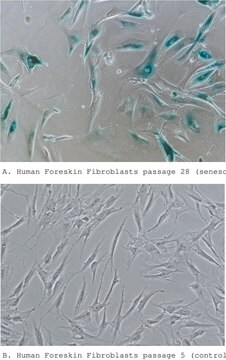238803
Cdk2 Inhibitor III
The Cdk2 Inhibitor III, also referenced under CAS 199986-75-9, controls the biological activity of Cdk2. This small molecule/inhibitor is primarily used for Phosphorylation & Dephosphorylation applications.
Sinônimo(s):
Cdk2 Inhibitor III, 2( bis-(Hydroxyethyl)amino)-6-(4-methoxybenzylamino)-9-isopropyl-purine, CVT-313, 2(bis-(Hydroxyethyl)amino)-6-(4-methoxybenzylamino)-9-isopropyl-purine, CVT-313
About This Item
Produtos recomendados
Nível de qualidade
Ensaio
≥98% (HPLC)
Formulário
solid
fabricante/nome comercial
Calbiochem®
condição de armazenamento
OK to freeze
protect from light
cor
white
solubilidade
DMSO: 10 mg/mL
Condições de expedição
ambient
temperatura de armazenamento
2-8°C
cadeia de caracteres SMILES
[n]1(c2nc(nc(c2nc1)NCc3ccc(cc3)OC)N(CCO)CCO)C(C)C
InChI
1S/C20H28N6O3/c1-14(2)26-13-22-17-18(21-12-15-4-6-16(29-3)7-5-15)23-20(24-19(17)26)25(8-10-27)9-11-28/h4-7,13-14,27-28H,8-12H2,1-3H3,(H,21,23,24)
chave InChI
NQVIIUBWMBHLOZ-UHFFFAOYSA-N
Descrição geral
Ações bioquímicas/fisiológicas
Cdk2/A, Cdk2/E
Embalagem
Advertência
Reconstituição
Outras notas
Brooks, E.E., et al. 1997. J. Biol. Chem.272, 29207.
Informações legais
Código de classe de armazenamento
11 - Combustible Solids
Classe de risco de água (WGK)
WGK 1
Certificados de análise (COA)
Busque Certificados de análise (COA) digitando o Número do Lote do produto. Os números de lote e remessa podem ser encontrados no rótulo de um produto após a palavra “Lot” ou “Batch”.
Já possui este produto?
Encontre a documentação dos produtos que você adquiriu recentemente na biblioteca de documentos.
Nossa equipe de cientistas tem experiência em todas as áreas de pesquisa, incluindo Life Sciences, ciência de materiais, síntese química, cromatografia, química analítica e muitas outras.
Entre em contato com a assistência técnica








